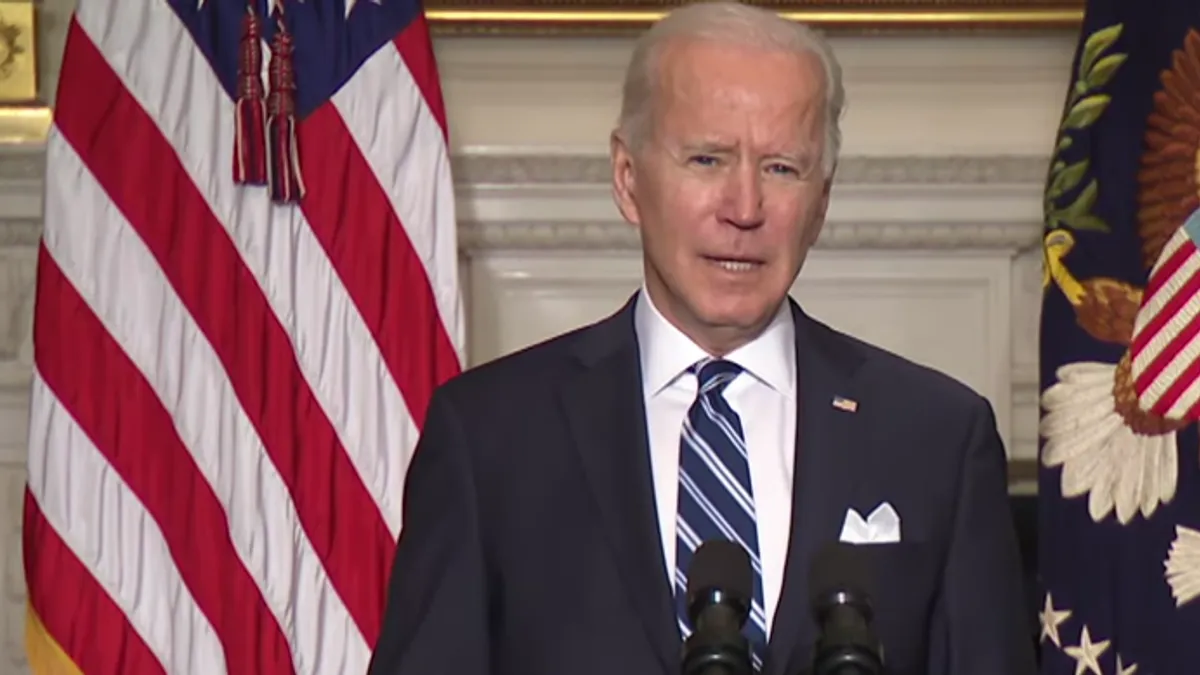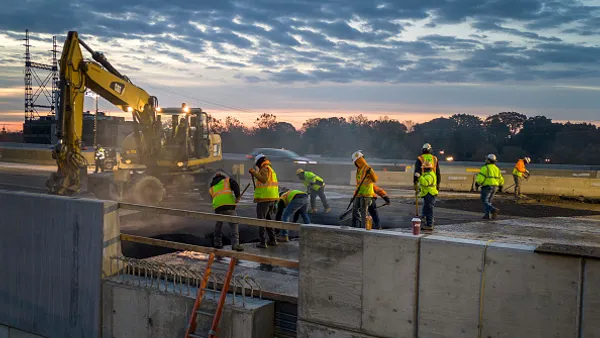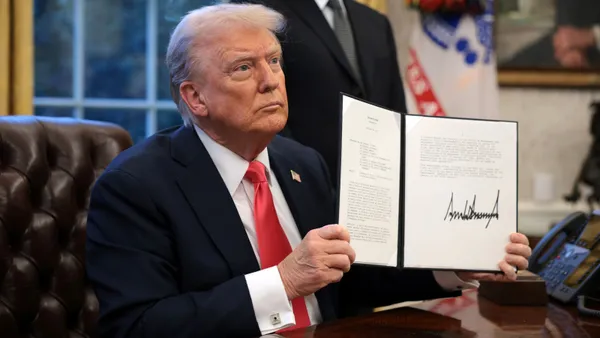Dive Brief:
- President Joe Biden this week issued an executive order establishing a task force, led by Vice President Kamala Harris, to explore how worker organizing and collective bargaining can be promoted within the U.S. workforce.
- The Executive Order on Worker Organizing and Empowerment gives the task force 180 days to make recommendations about potential changes to policies, practices and programs that will promote worker organizing and collective bargaining in both the public and private sectors, and to increase union membership rates. In addition to the vice president, the task force will be made up of members of the president's cabinet, heads of federal agencies like the Environmental Protection Agency and the Small business Administration and leaders from other federal departments and offices.
- The order gives the task force the authority to gather necessary information from labor organizations, worker advocacy groups, academia, experts and individuals if it will help the task force achieve its mission.
Dive Insight:
In announcing the order, Biden said that the federal government previously has not "used its full authority" to develop and promote policies that will support workers who want to organize and engage in collective bargaining with employers. As a result, according to the EO, union membership has declined and American workers have missed out on the potential for increased wages, benefits and job security.
Even before the COVID-19 pandemic, said Frank Manzo, policy director at the Illinois Economic Policy Institute, the level of wage and income inequality between union and nonunion workers was "unprecedented" due in part to right-to-work laws and other such legislation.
"The research consistently shows that the best way to deliver family-supporting wages and strong workplace safety protections is through collective bargaining," he said. "We need more of that in America."
And for contractors worried that having to pay union wages will make them less competitive, Manzo said, "there's simply not economic evidence to suggest that union contractors and construction workers are, on average, more expensive than nonunion construction workers and contractors after accounting for some other factors like the trade that they're in or the location.
"Labor costs are a very small percentage of total cost in the industry, and workers tend to be more productive, better trained and less likely to suffer an injury or fatality on the job."
However, not everyone is a fan of this latest pro-union effort by the Biden administration.
“It is concerning that the Biden administration is promoting policies that undermine workers’ choice to freely join a union, such as government-mandated project labor agreements," said Mike Bellaman, president and CEO of Associated Builders and Contractors, in a statement shared with Construction Dive.
According to Bellaman, of the 7.8 million workers employed in the U.S. construction industry, more than 87% have chosen not to join a union.
The administration has already shown it wants to make the road a little easier for workers who want to join unions and engage in collective bargaining with its support of the Protecting the Right to Organize Act of 2021.
The act would expand the rights of employees to organize and bargain collectively in the workplace, would help prevent retaliation against union employees striking on behalf of another union and prevent employers from requiring employees to attend meetings meant to discourage union membership.














